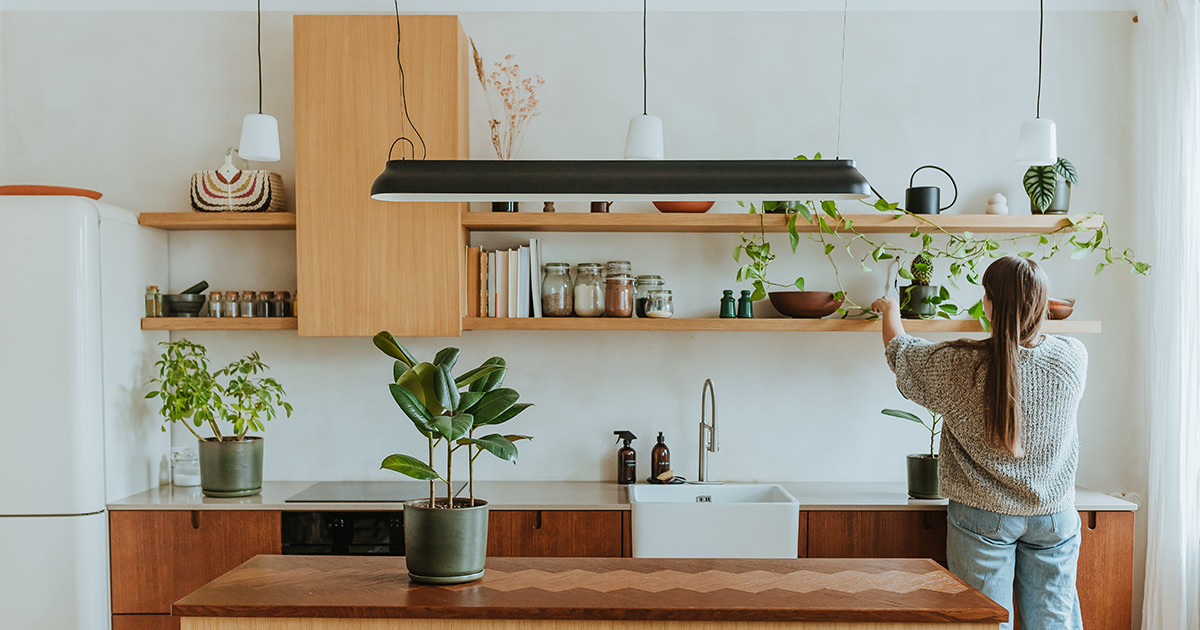Enjoy this article to help you declutter your things from contributing editor, Tammy Strobel.
About 15 years ago, my default response to trying new things was “no.” I liked my routines, and adapting to change was challenging for me. When my husband–Logan–suggested that we simplify our lives, I opposed the idea. I felt scared to make such a big change, and I didn’t think my parents or peers would support the idea.
After a lot of conversations with Logan, I began to recognize the benefits of simple living. I realized that decluttering my things – and finances – would give me freedom. Also, Logan argued that living simply would bring more joy into our lives (he was correct).
When we started to declutter things, I felt excited and nervous. For example, I had concerns, like:
- What if I regret giving away my stuff?
- What if my circumstances change and I need my things?
- What if I miss my belongings?
- What if I don’t like living in a small apartment with all my stuff?
- What if I need something just in case?
Maybe you can relate to these questions?
It turns out, my fears weren’t justified. I don’t regret giving away my stuff, and I don’t miss my things. And, all the “just in case” scenarios never came to fruition. As I let go of more and more things, I discovered that owning less actually made me happier. Decluttering my things has given me the freedom to:
7 regret-free ways to declutter your things
Below you’ll find 7 strategies that helped me mitigate my decluttering fears. I hope these ideas help you declutter your things too!
1.) Start small when you declutter things.
Start small, and take your time. Decluttering isn’t a race. You can begin with a small bookshelf, junk drawer, or one section of your closet. For example, starting small helped me build momentum, confidence, and encouraged me to let go of my fears. These 10 decluttering rules will help too.
2.) Take pictures of your things.
Taking photos of objects helped me – and friends – let go of belongings I no longer use. For example, a friend didn’t want to keep her doll collection, so she took photos of the dolls and gave them to a neighbor with a young daughter that loved the dolls. My friend occasionally looks through her old photos. However, she is happy the dolls have a new home.
Plus, taking photos of your things is an excellent way to document your decluttering progress. It’s fun to look back on before, after, and in-between shots. And, new phone cameras have a feature that allows you to scan photos in a three dimensional space. This is a fun way to capture photos of objects.
3.) Try a 30-day experiment.
In a recent article – “How Clutter Makes You Sick And Stressed” – Courtney said, “If letting go makes you feel stressed, be gentle with yourself and hide the things you want to release. You can simply box the things up you are unsure about and hide it for 30-60 days. If you don’t miss it or like me, forget what’s in the box all together, it’s easier to let go.”
For example, I recently put my old journals in a box. Then, I hid the box in my closet. I might shred some of my old notebooks, and I might keep others. First, I want to see if I actually miss my old journals. You can do this with clothing, tools, kitchenware, and more. Hiding your stuff can be a fun experiment when you declutter your things.
You can also try boxing up all of your duplicate items and only using your favorite pen, wooden spoon, or coffee cup for 30 or 60 days. You can turn this into a fun game, too!
4.) Donate books.
Reading is one of my favorite hobbies, so giving up my personal library of books was difficult. I don’t regret giving away my books, though. Over 15 years ago, my husband and I donated the majority of our books to the library. We enjoy sharing books with our community and friends. If I want to reread or reference a book again, I can borrow it from the library.
5.) Try Swedish Death Cleaning.
“While Swedish Death Cleaning may sound like some kind of morbid crime scene cleanup, it’s actually a thoughtful and effective approach to decluttering,” said writer Ashley Knierim. She went on to explain that this method of decluttering and organizing can “lessen the burden of your loved ones after you’ve passed.”
After I die, I don’t want my loved ones sorting through lots of my stuff or clutter. Keeping this in mind helps me let go of things I no longer use. Declutter things so other people don’t have to.
6.) Consider usefulness and sentimentality.
Before I give something away, I consider its usefulness and emotional value. Generally, I give things away that I don’t use regularly. If something holds a lot of sentimental value, I’ll wait for 30 or 60 days before I donate it or keep it.
Interestingly, as I’ve grown older, I’ve become less and less attached to my belongings. I no longer value most objects beyond their utility. What brings me true joy are experiences and spending time with loved ones.
7.) Practice gratitude
Decluttering helped us create a cozy minimalist home, and I’m grateful for our space. Focusing on gratitude is one way we’ve been able to let go of extra stuff without regret.
Remember, decluttering isn’t a race. When decluttering your things, take your time, and set a pace that works for you.
Resources
Looking for more inspiration to aid your decluttering efforts? Explore the resource list below:
- Subscribe to “Soul & Wit.” It’s a podcast that will uplift and inspire you to let go of clutter, busyness, and more.

